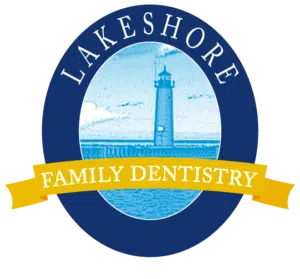For many parents at work, panic sets in when a call from the school office includes the words “accident” and “your child’s tooth.”
Knowing what steps to take in the first few hours after the incident – and what to do with the knocked out, or as dentists refer to as an avulsed tooth – will be critical in saving it and preserving your child’s great smile.
Best outcomes usually result if a dentist can see your child within the first few hours after the incident occurs. If you get a call, immediately contact your dentist. Do not wait until the end of the school day, or after a game, to take care of the injured tooth.
For all tooth injuries:
- Use a clean towel to wipe away blood to in order to see the extent of injury. Be careful, however, not to use the towel to apply pressure to an exposed hole, as this may damage the ligaments within the gum tissue waiting for its tooth to return back home.
- Put an ice pack on the outside, not the inside, of the child’s mouth to help reduce swelling.
- Have the child take pain relief medicine, if able to do so.
The specific action you should take depends on the type of trauma to the tooth.
Three Types of Tooth Injuries
There are three types of injuries that can occur with a tooth. It can get knocked out, broken or chipped, or be misaligned. Here’s what you should do in each case, and how the dentist will likely treat the tooth injury.
1. Knocked Out Tooth
- If the entire tooth, including its root, is knocked out and clean, quickly pick up the tooth by the top crown, which is the part of the tooth you see in the mouth, and gently place it back into the hole, or socket, where the tooth was removed.
- If the knocked out tooth is dirty, gently hold it by the crown, not by the root, and rinse it in water first, being careful not to brush, scrub or sterilize the root of the tooth, which can kill its cells.
- When placing the tooth back into the hole or socket in the mouth, have the person gently bite down on it with a towel to help it settle into place.
- If trying to replace the tooth proves too difficult, put it into a glass of milk and bring it to the dentist who will work to replant it. Do not put it in a tissue – it needs to stay moist.
Treatment for a knocked out tooth will vary depending on the trauma sustained to it. Ideally, the ligaments within the gum tissue will allow the tooth to be reattached.
Dental work, time and X-rays will tell if it the tooth made it through the trauma. If the nerves within the tooth are damaged, the tooth will eventually turn grey. If that happens, additional dental work may be needed which may include a root canal or crown.
If the tooth can’t be saved, take heart in knowing that your child will join the club of 5 million others who also have had their tooth knocked out each year, according to the Association of American Endodontists.
2. Broken or Chipped Tooth
- Gently rinse it in salt water first, being careful not to brush, scrub or sterilize the portion of tooth still in mouth. The remaining tooth structure may still be very fragile.
- Gently wipe away the blood to evaluate the damage but avoid pushing or biting down too hard on the broken tooth.
- Be careful not to cut your tongue, cheek or lip if the broken tooth has a rough edge.
Treatment for a broken or chipped tooth will depend on the extent of the missing tooth structure. If only a small piece of tooth enamel is chipped off, it most likely will be repaired with a tooth colored restoration material that is bonded to the tooth.
If a larger amount of tooth structure is missing, it may require a crown or cap to be able to restore the tooth’s chewing function or for esthetic purposes.
3. Misaligned Tooth
- If the tooth is extruded, appearing longer than the surrounding teeth, or is laterally displaced by either being pushed back or forward, have a trained dental or medical team member reposition the tooth into the socket using firm finger pressure is important.
- If the tooth is intruded, or looks short and pushed into the gum, do not attempt to reposition it.
- Treatment will vary according to the severity of the luxation, which is caused if the tooth is in the socket but appears to be in the wrong position.
Mouth Guards Matter
Children need to be reminded regularly that adult teeth are permanent teeth, so they need to take care of them. One way to protect them is for both adults and children to use protective mouth gear when playing contact sports. Mouth guards do matter, especially when trying out a trick on a skateboard or playing football, hockey, basketball, baseball or the myriad of other sports played today.
My last post highlighted the types of mouth guards that are available for athletes, how to properly fit and take care of them.
If a tooth injury does occur, don’t hesitate to call our office at 414-352-1600. There will be emergency phone number to get a hold of us if it is after regular office hours.
